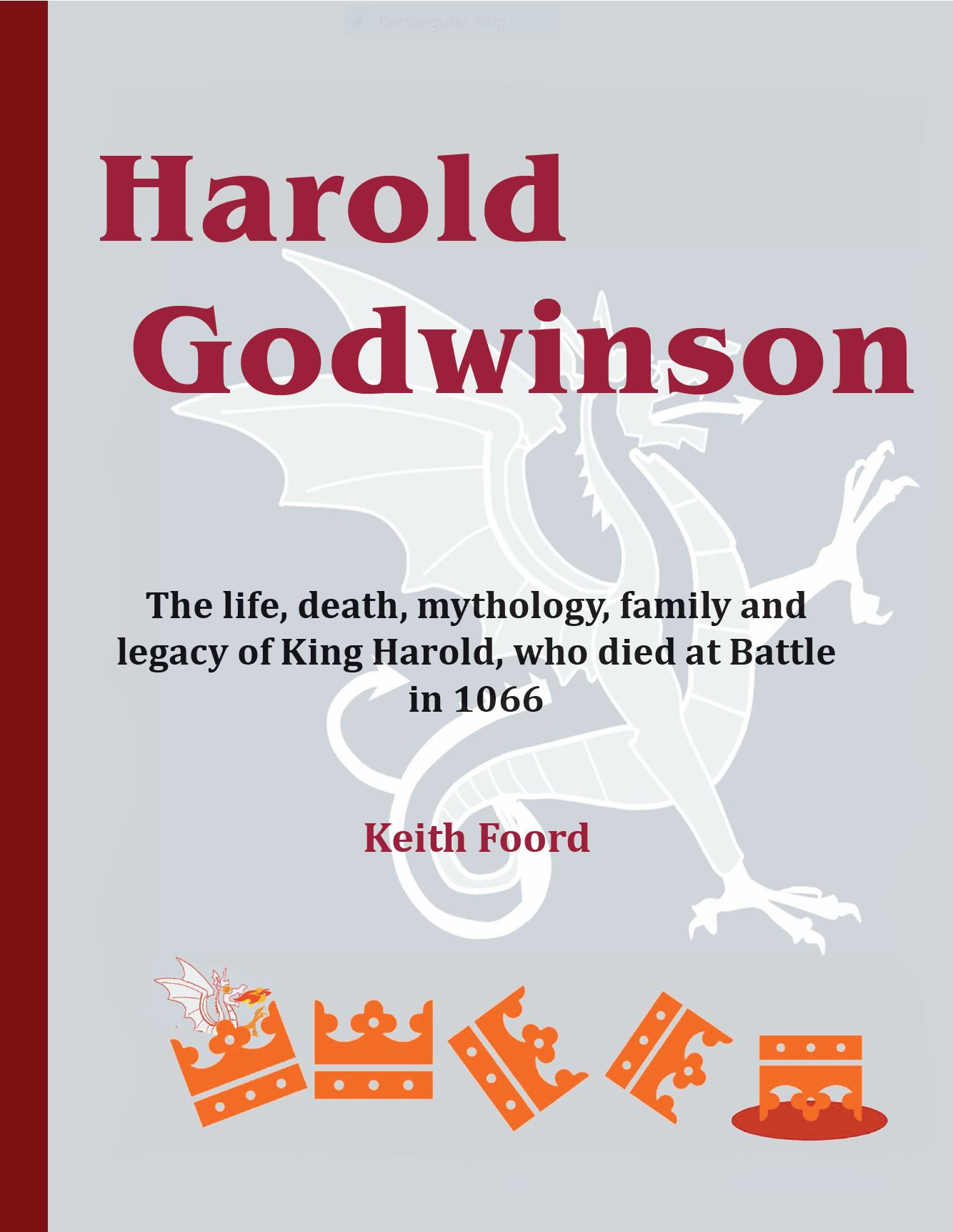
Published December 2021
This book critically examines, unravels and describes the varied strands of evidence not only about Harold Godwinson’s life and death, but also arising mythologies, his surviving family and legacy. The complexities of his relationships with King Edward the Confessor and William of Normandy are also uncovered. In 1066 an unexpected Viking invasion led to the Battles of Fulford Gate and Stamford Bridge in Yorkshire – with the death of Harold’s brother, Tostig – just before William invaded Sussex. Harold fell at the subsequent Battle of Hastings, a mythology was created, and his remaining wives, children and family experienced very varying fortunes, all of which are explored. Harold’s defeat and the Conquest inevitably altered England and the book finally surveys how these changes were perceived during the following millennium.
‘Congratulations on the amount of knowledge you bring to this book, which is fascinating and very complete.’ (Sylvette Lemagnen, former curator of the Bayeux Tapestry and Vice-President of BDHS)
‘…the book provides a vivid and thought-provoking narrative…’ (Professor David Bates, President of BDHS)
This book examines and unravels the varied strands of sometimes flimsy evidence about Harold Godwinson’s life, death, family, mythologies, and legacy. Born into a powerful Anglo-Danish family in about 1022, Harold’s father Godwin Wulfnothson became the premier earl of England. His mother was closely related to the Danish Royal family. He became Earl of East Anglia at an early age and supported his father during his rebellion in 1051against King Edward the Confessor, when the Godwins were exiled. After their reinstatement in 1052 the Godwins became even more powerful.
When his father died, Edward made Harold Earl of Wessex and ‘Dux Anglorum’, his right-hand man. Harold sailed against potential Danish invaders, led sea and land forces against the Welsh and underook diplomatic missions to Flanders and beyond on behalf of Edward.
His trip to Normandy in 1064/5 remains incompletely understood, but it led to a fateful oath to Duke William of Normandy. In late 1065 there was a revolt in Northumbria which led to his brother Tostig’s fall, then in January 1066 King Edward died and Harold became King of England. Later that year, an unexpected Viking invasion led to the Battles of Fulford Gate and Stamford Bridge in Yorkshire (with the death of Tostig), just before Duke William of Normandy invaded Sussex. Harold and his brothers Gyrth and Leofwine fell at the Battle of Hastings and a mythology was created.
His remaining wives, children and wider family then experienced very varying fortunes and adventures at home and abroad. After Harold’s defeat and the subsequent Norman Conquest, England was inevitably altered under the Norman yoke. The way in which the changes were perceived varied considerably during the following millennium and this is explored, with many ideas for further reading.
For 1066 Country, Harold’s death is ‘big bang’ history, which has not just a national but an international context. Notwithstanding this, some small items of local lore are included which would have been overlooked by many authors and add appeal to the narrative.
184 pages Metric Crown Quarto ISBN 978-1-90399-11-7
£15 (25% discount to members of BDHS when bought directly from the Society)
Click here to order online